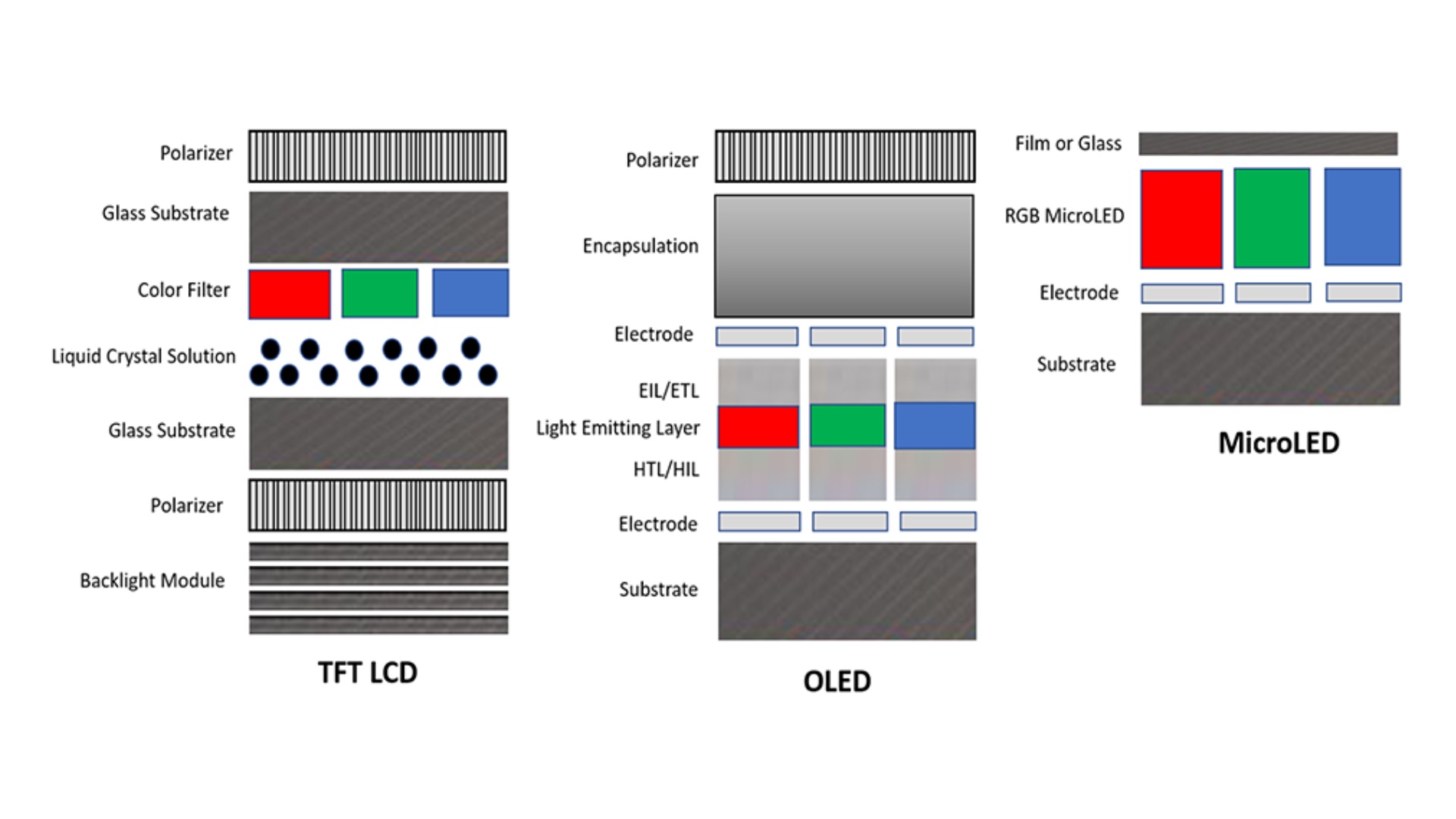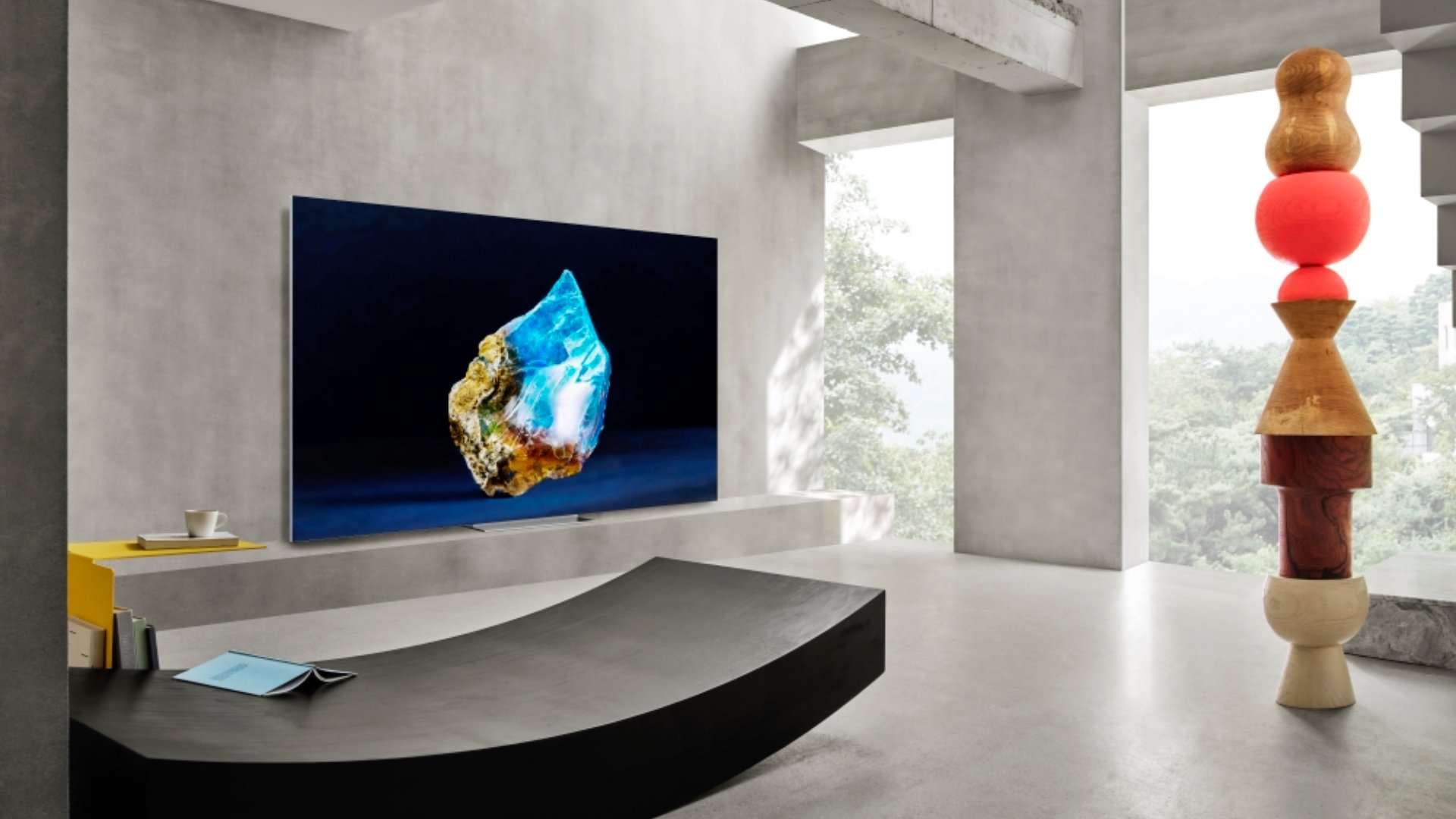Samsung, the biggest TV brand in the world, sells a wide range of TVs. And its lineup consists of TVs made using various display technologies, ranging from LCD in the affordable segment to QD-OLED in the high-end segment. In 2018, the company unveiled a new display technology—MicroLED—with its gigantic The Wall TV. So what exactly is a MicroLED TV, and how is it better than other TVs?
In this article, we will explain how a MicroLED TV panel works and what are its advantages and disadvantages over Mini-LED and QD-OLED TVs.
How does a MicroLED panel work?
![]()
A MicroLED panel features extremely tiny individual pixels that can create color and light, similar to OLED. However, unlike an OLED panel, it doesn't use pixels made using organic material. It is called a MicroLED panel because its pixels are very small and measured in micrometers. As pixels inside a MicroLED panel can create colors as well as light, they don't need a separate backlight source, making the whole panel slimmer than competing LCD, Mini-LED, and even OLED panels.
Since each pixel in a MicroLED screen can produce its own light and color, it can accurately control light to a pixel level. So, similar to OLED (and QD-OLED) panels, a MicroLED panel can display perfect blacks and an infinite contrast ratio. It also features an extremely wide viewing angle, similar to or even better than OLED TVs.

As pixels in a MicroLED panel don't feature organic material (unlike OLED), it isn't susceptible to burning after long periods of continuous usage or high brightness levels. Hence, MicroLED TVs don't have the burn-in problem. Since the MicroLED structure is straightforward compared to LCD or OLED, it has higher efficiency and brightness. The best Mini-LED TVs can reach up to 4,000 nits of peak brightness. MicroLED TVs can match that and reach up to 4,000 nits of peak brightness. Samsung is confident that it can improve MicroLED TVs to reach a peak brightness of up to 10,000 nits, achieving perfect realism with HDR content.
What are the advantages of a MicroLED TV?

As explained earlier, MicroLED TVs combine the best features of LCD TVs and OLED TVs. It can offer perfect blacks, extremely wide viewing angles, and an infinite contrast ratio, similar to OLED TVs. And it can do that while providing LCD or Mini-LED-like brightness levels without suffering problems related to pixel burn-in, which means they last much longer. As the backlight can be controlled at a pixel level, there is no blooming effect found on LCD and Mini-LED TVs.
- OLED-like perfect inky blacks
- Wide color gamut coverage
- Wide viewing angles
- High brightness levels, even for a long time
- No blooming problems around bright objects in a scene
So, what's the catch with MicroLED TVs?

Since this is a new technology, making a MicroLED panel is an extremely costly affair. Samsung has been selling MicroLED TVs to those who can spend tens of thousands of dollars. MicroLED TVs are so costly that no normal consumer can buy one as of 2023. Despite selling them for over four years, the company doesn't sell MicroLED TVs as a standalone unit. You need to join multiple MicroLED modules to make a TV per your size and shape requirements.
Moreover, the pixels inside a MicroLED panel are still not small enough to cram 4K resolution (8.3 million pixels) in an area as small as 55 inches. Hence, you don't see any MicroLED TV that measures 55 inches diagonally and still offers a sharp 4K resolution. The most compact MicroLED that Samsung has managed to make is a 110-inch TV with 4K resolution. Yes, the company recently showcased a 50-inch MicroLED panel but didn't specify its resolution, and according to some reports, its resolution is somewhere around QHD.
So, the disadvantages of a MicroLED TV are that it is:
- Extremely costly, usually costing tens of thousands of dollars.
- And it is not small enough for most homes.
Yes, MicroLED TVs are considered the holy grail of display technology, but since it is so costly, owning one is almost impossible for normal consumers. It will be years before MicroLED TVs become affordable enough to replace OLED, QD-OLED, and Mini-LED TVs.


![[Video] We went hands-on with Samsung’s giant 140-inch Micro LED TV](https://www.sammobile.com/wp-content/uploads/2024/01/Samsung-Micro-LED-TV-140-Inch-CES-2024-Hands-On-226x127.jpg)




